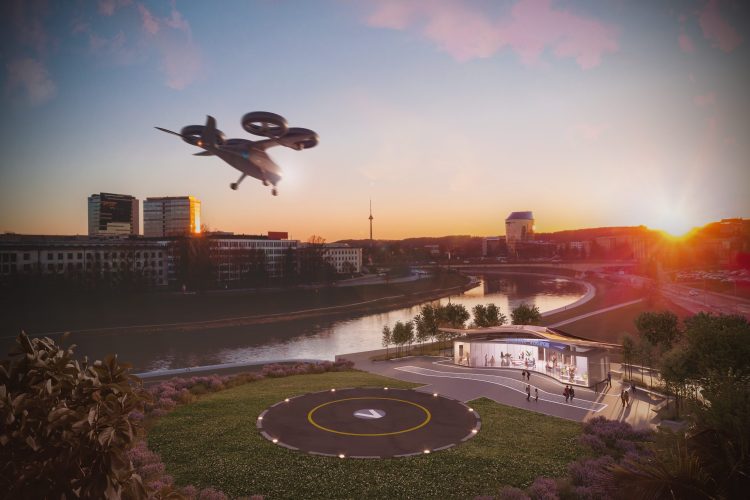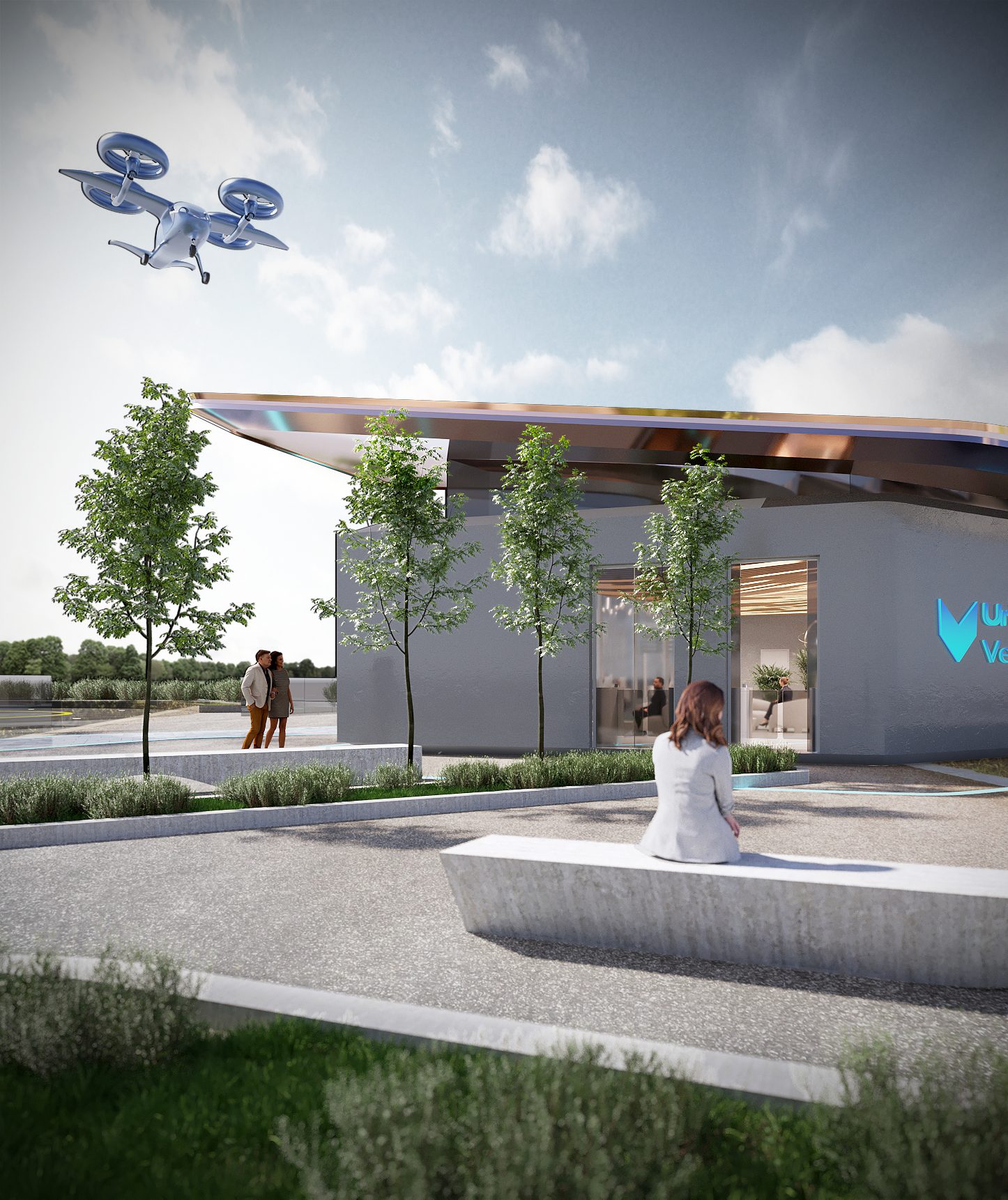The future of vertiports for Advanced Air Mobility in the Italian sky
- Like
- Digg
- Del
- Tumblr
- VKontakte
- Buffer
- Love This
- Odnoklassniki
- Meneame
- Blogger
- Amazon
- Yahoo Mail
- Gmail
- AOL
- Newsvine
- HackerNews
- Evernote
- MySpace
- Mail.ru
- Viadeo
- Line
- Comments
- Yummly
- SMS
- Viber
- Telegram
- Subscribe
- Skype
- Facebook Messenger
- Kakao
- LiveJournal
- Yammer
- Edgar
- Fintel
- Mix
- Instapaper
- Copy Link
Posted: 4 September 2023 | Angelica Sguazzotti, Carlos Tursi | No comments yet
Urban V’s CEO, Carlo Tursi, and Business Strategy Associate, Angelica Sguazzotti wrote exclusively for International Airport Review, on how Advanced Air Mobility (AAM) can help reduce emissions, improve travel efficiency and act as touch points for different air hubs.


The future of AAM with UrbanV. CREDIT: URBANV
As the aviation industry continues to evolve AAM, a new integrated zero-emission mobility system to move faster from and to locations underserved by standard transport services, has emerged as a promising concept that could revolutionise urban and regional transportation.
Central to this futuristic vision are vertiports, landing and takeoff points for eVTOL (electric Vertical TakeOff and Landing) aircraft, new-concept vehicles that use electric propulsion to take off and land vertically, covering distances of tens or hundreds of kilometres.


CREDIT: URBANV
The rapid advancements in electric aviation have unlocked the potential for urban air mobility, providing a safe, sustainable and efficient mode of transportation for urban areas plagued by congestion.
The rapid advancements in electric aviation have unlocked the potential for urban air mobility, providing a safe, sustainable and efficient mode of transportation…”
These vertiports, built near major connecting hubs or key areas of our cities, will serve as crucial infrastructure for the seamless integration of aerial taxis and both urban and regional air mobility services into our daily lives. Italian airports will shed light on how these innovative hubs are shaping the future of transportation.
As urban centres continue to face mounting challenges in transportation, advanced air mobility offers a compelling solution. AAM envisions a network of eVTOL aircraft capable of seamlessly transporting passengers and cargo within and between cities. Vertiports, strategically located landing and takeoff hubs, will facilitate smooth operations and maximise the potential of AAM.
Vertiports surprising advantages
The rapid advancements in electric aviation have unlocked the potential for urban air mobility, providing a safe, sustainable and efficient mode of transportation for urban areas plagued by congestion. With eVTOL aircraft set to become a reality in the coming years, the establishment of vertiports becomes an imperative step towards realising the full potential of advanced air mobility. The main advantages of Vertiports are:
- a) enhancing connectivity: vertiports act as pivotal nodes, linking various points within urban landscapes. By strategically locating these hubs, cities can ensure efficient and widespread access to aerial mobility services
- b) relieving urban congestion: as cities continue to expand, traditional surface transportation systems face mounting pressure. Vertiports offer an alternative and congestion-free mode of travel, reducing traffic on the ground and easing the burden on existing infrastructure
- c) eco-friendly operations: the electrification of air travel significantly reduces carbon emissions, contributing to more sustainable urban transportation and aligning with global climate goals.


CREDIT: URBANV
While the potential benefits of vertiports are undeniable, their successful implementation comes with certain challenges. Coordinating with existing airport infrastructure and urban planning authorities will be crucial to ensure seamless operations and minimise disruption.
In addition, the introduction of eVTOL aircraft presents novel regulatory challenges. Collaborative efforts between airports, governments, and regulatory bodies are vital to establish robust safety standards.
The future of vertiports for advanced air mobility promises to reshape urban transportation and improve connectivity between cities and areas of interest.”
Finally, public perception and acceptance of new aviation technologies will be critical. Airports must engage with local communities to address concerns and promote the benefits of advanced air mobility.
For these reasons, the successful implementation of vertiports for advanced air mobility requires a collaborative approach among airports, governments, industry players and communities.
Italian history of UrbanV
Italy, renowned for its rich history in aviation and engineering, has been at the forefront of embracing advanced air mobility, with several airports taking pioneering steps towards incorporating vertiports into their future. It helps to understand the importance of expanding transportation options to complement existing services and connecting tourists with locals.
In this age of ever-evolving transportation UrbanV was born: a company founded by Aeroporti di Roma, SAVE Group, Aeroports de la Côte d’Azur and Bologna Guglielmo Marconi Airport. It was born for the development of Advanced Air Mobility infrastructure for Italy and for an international level.
The first networks of vertiports will cover the catchment areas of founding shareholders (Rome, Venice, Nice and Bologna), with the goal to expand operations in Europe and beyond. The ambition of UrbanV is to be among the first in the world to launch Advanced Air Mobility commercial networks, starting from Rome where we plan to activate the first route (Fiumicino Airport – Rome City Centre) by 2024.
The future of vertiports for advanced air mobility promises to reshape urban transportation and improve connectivity between cities and areas of interest. As Italian airports take bold strides in exploring this innovative concept, they provide valuable insights on how to embrace change, overcome challenges and implement sustainable solutions. By learning and fostering collaboration, the aviation industry can usher in an era of greener, faster and efficient urban transportation through advanced air mobility and vertiports.


Carlo Tursi is the Chief Executive Officer of UrbanV. His entire career has been dedicated to the world of innovation and start-ups and he boasts over 15 years of international experience in Europe, the United States, Asia and the Middle East, mainly in the sectors of mobility and venture capital.
A mechanical engineer with an MBA from MIT Sloan, Carlo began his career as a consultant at Kearney. Later, he was Director of Corporate Development for Better Place, an Israeli-American start-up focused on developing infrastructure for electric mobility. He was an Associate at Quantum Pacific, a London-based family office where he worked primarily in the automotive and energy sectors, while also contributing to the company’s venture capital activities. For almost 5 years he was General Manager for Italy at Uber, the largest ride-hailing company in the world. Most recently he was in TIM, the leading Italian telecommunications company, where he was Head of Business Development and CEO of TIM Ventures.


Angelica Sguazzotti
Angelica Sguazzotti is Business Development & Finance Associate at UrbanV.
She holds a degree in Economics and Management and began her career in consulting at Deloitte, where she primarily worked with clients in the infrastructure and transportation sectors. Later, Angelica was a Consolidated financial statements & planning specialist at Mundys Group, a global leader in transport infrastructure concessions.
Related topics
Advanced air mobility (AAM), Airspace modernisation, Drones, Operational efficiency
Related airports
Aeroporti di Roma, Bologna Guglielmo Marconi Airport, Fiumicino Airport


















